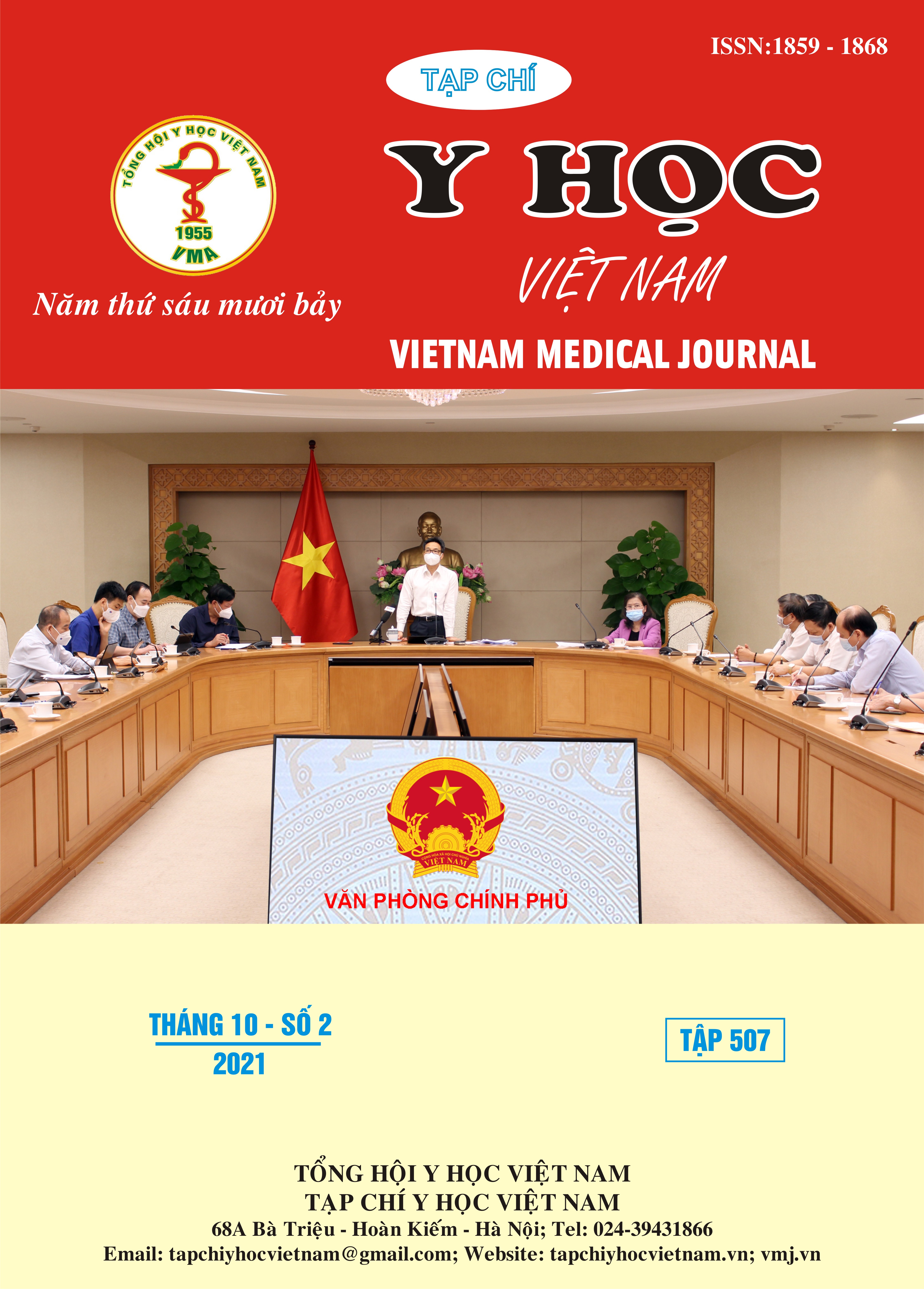EVALUATE THE RESULTS OF REHABILITATION OF KNEE JOINT AFTER ARTHROSCOPIC ARTHROFIBROSIS
Main Article Content
Abstract
Knee stiffness is a potentially complex complication after any surgery or injury to the knee joint. There are many treatment methods for this complication, of which arthroscopic arthrofibrosis is becoming increasingly popular. Many studies in the world and in Vietnam have shown that patients need a comprehensive rehabilitation program after arthroscopic arthrofibrosis. Therefore, we conducted a study with the following objectives: (1) Evaluate the results of rehabilitation of knee joint mobility after arthroscopic arthrofibrosis. (2) Learn some factors affecting the ability to restore knee mobility after arthroscopic arthrofibrosis knee. Subjects: 25 patients diagnosed with post-traumatic knee stiffness underwent arthroscopic arthrofibrosis at Viet Duc University Hospital from 9/2020 to 7/2021. Methods: prospective, evaluated before and after the intervention, without a control group. Results: Traffic accidents are the leading cause of primary injury (76%). Fractures other than the femur and ligament tears are the two most common injuries, 52% of patients in the two groups above have combined lesions. The group of patients with knee stiffness after surgery (23 patients) more than the conservative treatment group (2 patients), intra-articular damage (intra-articular fracture 40%, soft tissue damage 60%) more than extra-articular damage (16%). The average range of motion after 8 weeks of rehabilitation (118.92± 14.06 degrees) increased by 56 degrees compared to preoperative (62.2±26.38 degrees). The proportion of patients with very good rehabilitation results increased significantly from 8% (preoperative) to 92% and there were no moderate and poor patients after 8 weeks of treatment. The group of extra-articular lesions had the highest mean HSS score after treatment (95.5±3.11). The other fracture group had the highest mean HSS score after treatment (93.62±4.72). 52% of patients had arthroscopic arthrofibrosis after 3-6 months of trauma, this is the group with the best treatment results with the highest mean HSS score (93.15±5.19). Conclusion: Arthroscopic arthrofibrosis combined with a comprehensive rehabilitation program is highly effective in increasing range of motion and improving knee function. Some factors that affect the outcome of knee rehabilitation are the initial injury causing intra-articular or extra-articular damage, the injury causing intra-articular or extra-articular fibrosis, the treatment of the injury by surgery or conservative treatment. survival, arthroscopic arthrofibrosistime is a factor that needs further study.
Article Details
Keywords
post- traumatic knee stiffness, after arthroscopic arthrofibrosis
References
2. Bonutti PM, McGrath MS, Ulrich SD, McKenzie SA, Seyler TM, Mont MA. Static progressive stretch for the treatment of knee stiffness. The Knee. 2008;15(4):272-276.
3. Liu K, Liu S, Cui Z, Han X, Tang T, Wang A. A less invasive procedure for posttraumatic knee stiffness. Arch Orthop Trauma Surg. 2011;131(6):797-802.
4. Liu Sh, Liu km, Wang aq, Gui zg, Han xz, Wang f. Management strategies for post-traumatic knee stiffness. Biomedical. 2016.
5. Parisien JS. The role of arthroscopy in the treatment of postoperative fibroarthrosis of the knee joint. Clin Orthop. 1988;(229):185-192.
6. Pujol N, Boisrenoult P, Beaufils P. Post-traumatic knee stiffness: Surgical techniques. Orthop Traumatol Surg Res. 2015;101(1, Supplement):S179-S186.
7. Vaish A, Vaishya R, Bhasin VB. Etiopathology and Management of Stiff Knees: A Current Concept Review. Indian J Orthop. 2021;55(2):276-284.
8. Alm L, Klepsch L, Akoto R, Frosch K-H. Arthrofibrosis of the knee: clinical result after early vs. late arthroscopic arthrolysis of 100 patients. Orthop J Sports Med. 2020;8


